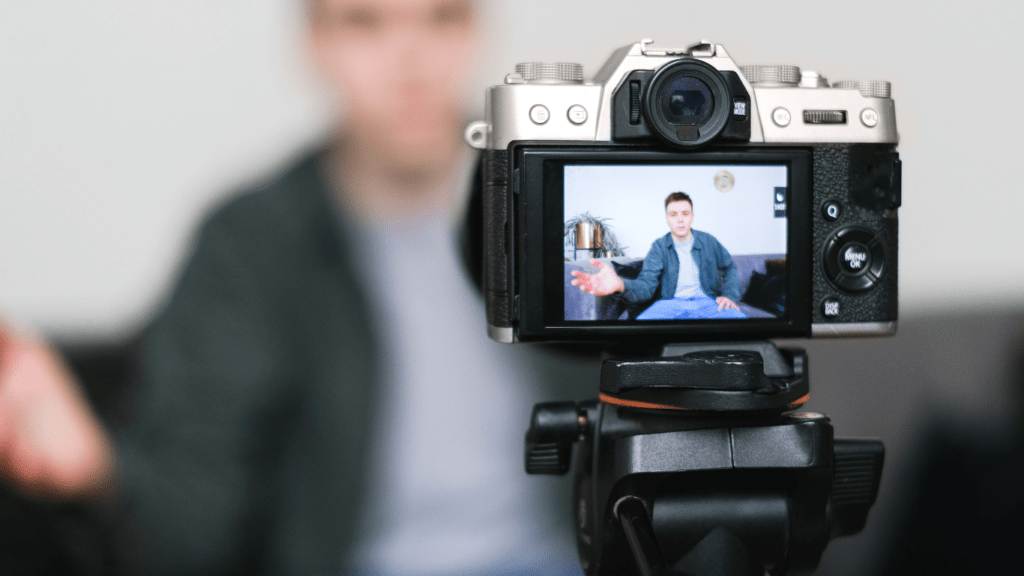The Rise of Influencer Marketing
Influencer marketing’s been a game-changer in the digital age, transforming how brands connect with consumers across the globe. Understanding its rise requires a look at its history and the key factors driving its growth.
Historical Perspective
Influencer marketing began with celebrity endorsements, with brands leveraging the fame of movie stars and athletes to sell products. In the early 2000s, the rise of social media platforms like Facebook and YouTube opened new avenues for individuals to build personal brands.
As platforms like Instagram and TikTok emerged, everyday individuals started gaining significant followings. This gave rise to micro-influencers, who had fewer followers but highly engaged audiences.
By 2017, brands recognized the cost-effectiveness and authenticity of partnering with these influencers, sparking a shift away from traditional celebrity endorsements toward more relatable social media personalities.
Key Factors Driving Growth
Several factors have fueled the explosive growth of influencer marketing:
- Social Media Penetration: With over 4.2 billion social media users in 2021, platforms like Instagram, TikTok, and YouTube offer brands unparalleled reach.
- Consumer Trust: Consumers tend to trust recommendations from personal connections more than traditional ads. Influencers bridge the gap by offering personalized and relatable product endorsements.
- Authenticity: Influencers often share genuine experiences with products, making their reviews more authentic and persuasive than traditional marketing.
- Targeted Marketing: Brands can collaborate with influencers whose audiences align with their target demographics, ensuring more effective and efficient marketing campaigns.
- Content Diversity: Influencers create a wide range of content types, from tutorials and reviews to unboxing videos and lifestyle vlogs, providing brands with diverse promotional opportunities.
Understanding these key growth drivers helps brands leverage influencer marketing to achieve global reach and engagement.
Impact of Influencer Marketing Globally

Influencer marketing has transformative effects across worldwide markets. It has redefined consumer behaviors and reshaped the strategies of global brands.
Changes in Consumer Behavior
Consumers increasingly trust influencers over traditional ads. Social media personalities provide authentic, relatable recommendations, leading to higher engagement rates.
According to a GlobalWebIndex study, 54% of social media users aged 18-34 purchased products based on influencer recommendations. This shift indicates a move towards personalized marketing rather than mass advertising.
Shoppers now prefer user-generated content. Platforms like Instagram and YouTube have enabled influencers to create original, engaging content that resonates with followers. For example, beauty vloggers often review makeup products, influencing their audience’s purchasing decisions.
The rise in mobile internet access has further accelerated this shift. With smartphones accounting for over 50% of global internet traffic in 2022, consumers can instantly access and act on influencer recommendations, making it easier for brands to reach their target audience.
Influence on Global Brands
Global brands have leveraged influencers to penetrate new markets. For instance, Nike collaborates with athletes and fitness influencers across various countries to promote its products, customizing campaigns to local cultures and preferences.
This strategy enhances brand visibility and authenticity.
Influencers provide valuable feedback that helps brands refine their offerings. Product reviews and collaborations often lead to improved products tailored to consumer demands.
For example, tech brands frequently partner with tech reviewers who provide insights that drive product enhancements.
Brands also gain access to diverse content creatives. Collaborating with influencers allows global brands to tap into different content formats such as blogs, videos, and social media posts.
This diversity ensures that the brand message reaches different audience segments effectively.
Strategies for Leveraging Influencer Marketing
Influencer marketing on a global scale requires a strategic approach to maximize impact and reach.
Identifying the Right Influencers
Selecting the right influencers is crucial. First, consider the target audience by analyzing demographic data. Identify influencers whose followers align with the brand’s target market.
Second, evaluate engagement rates rather than follower count. High engagement indicates an active audience. For example, an influencer with 50,000 followers and a 5% engagement rate has more actionable reach than one with 200,000 followers and a 1% engagement rate.
Third, assess content quality. Influencers should produce content that aligns with the brand’s aesthetics and values. Review their past collaborations to ensure consistency.
Lastly, factor in authenticity. Influencer credibility significantly impacts campaign success. Genuine endorsements yield better results. Tools like Social Blade and HypeAuditor can help verify influencer metrics and authenticity.
Measuring the Impact
Measuring the impact of influencer marketing involves several metrics. Track engagement metrics such as likes, comments, and shares to gauge immediate audience response. High engagement often correlates with successful messaging.
Monitor website traffic and sales conversions. Use UTM parameters and custom discount codes to attribute traffic and sales directly to influencer campaigns. Google Analytics and platform insights offer detailed breakdowns.
Evaluate brand sentiment. Sentiment analysis tools can help understand how an influencer’s audience perceives the brand post-campaign. Positive sentiment growth indicates successful influencer alignment.
Track return on investment (ROI). Calculate ROI by dividing net profit by the total cost of the influencer campaign. Positive ROI confirms effective resource allocation.
Document long-term impact by analyzing follower growth, brand awareness, and sustained engagement. Regularly reviewing these metrics ensures continuous optimization of influencer marketing strategies.
Case Studies: Successful Global Influencer Campaigns
Influencer marketing has produced remarkable results for global brands. By examining specific campaigns, we can see how strategic collaborations reshape brand identities and drive growth.
Campaigns That Reshaped Brands
- Nike and Colin Kaepernick
Nike’s campaign featuring Colin Kaepernick in 2018 generated massive publicity. The “Just Do It” ad appeared during a period of heightened social awareness, resonating across diverse demographics. According to Edison Trends, Nike’s online sales surged by 31% within days of the campaign launch. - Daniel Wellington and Social Media Influencers
Watch brand Daniel Wellington leveraged micro-influencers on Instagram to increase brand visibility. By providing personalized discount codes and using consistent hashtags, the brand saw a growth from a $15,000 initial investment to over $200 million in revenue within four years per a 2017 Forbes report. - Samsung and Casey Neistat
Samsung collaborated with YouTube influencer Casey Neistat to promote the Galaxy smartphone line. Neistat’s engaging content and authentic user experience helped Samsung directly target tech-savvy consumers. The viewership of campaign videos exceeded 20 million, significantly boosting product awareness and sales. - Audience Resonance
Campaigns must resonate with the target audience emotionally and culturally. Nike’s ad with Kaepernick succeeded because it aligned with current social issues tying back to the brand’s ethos. - Micro-Influencer Impact
Brands should not overlook micro-influencers. Daniel Wellington’s success shows how smaller influencers can effectively reach niche markets with high engagement rates, driving consistent brand loyalty and sales.| - Authenticity
Authenticity is crucial in influencer partnerships. Samsung’s partnership with Casey Neistat thrived because of his genuine and relatable content, making the promotion feel less like an ad and more like a recommendation.
Strategically crafted influencer campaigns not only enhance brand visibility but also lead to significant financial returns and lasting consumer relationships.
Challenges in Influencer Marketing
Influencer marketing, despite its many benefits, comes with its set of challenges. Brands must navigate these obstacles to thrive.
Managing Authenticity and Trust
Influencers must maintain authenticity to build trust with their audiences. Authentic engagement more effectively drives conversion rates, but commercial partnerships risk appearing inauthentic.
When influencers promote products they don’t genuinely use or believe in, audience trust diminishes.
For instance, if a beauty influencer known for organic products suddenly promotes a chemical-based brand, followers notice the discrepancy. Brands should ensure alignment between influencer values and product offerings.
Legal and Ethical Considerations
Brands and influencers face legal and ethical hurdles. FTC guidelines require disclosure of sponsored content to ensure transparency. Non-compliance can result in hefty fines.
Additionally, misleading claims about product benefits raise ethical concerns. In 2017, the FTC sent warning letters to over 90 influencers for failing to disclose paid partnerships.
Businesses must educate influencers on these regulations to avoid legal repercussions and maintain ethical standards in their promotions.




